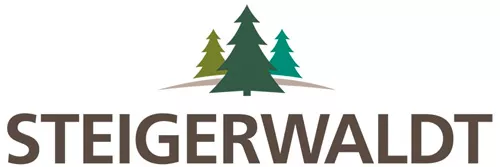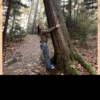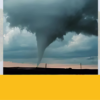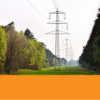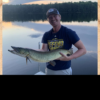Endangered Species Day: Karner Blue Butterfly
There are many factors that go into a quality timber harvest, one of those being the awareness of potential endangered species habitats. One specific species that often impacts forestry-related activities is the Karner Blue Butterfly (Lycaeides melissa samuelis). These butterflies were listed as endangered in 1992 and by that time, the total population had already dropped by approximately 99%. Much of this was due to their very limited habitat becoming fragmented and lost over time. Fire suppression and halting other natural disturbances, along with increased farm and residential uses for the land were one of the main causes of habitat loss over the past few decades.
The Karner Blue Butterfly is a relatively small butterfly that has a wingspan of about one inch. Male and female Karners look distinctly different from one another, as well. The male Karners have primarily blue/violet wings with black and white edges. The females are darker in color with only small amounts of violet showing near their torso with the rest of their wings being grayish brown. Females also have orange crescents on the bottom of their hind wings.
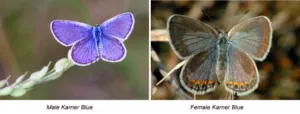
Wisconsin actually has one of the largest populations of Karner Blue Butterflies in the World! Karner Blue Butterflies typically occupy barrens, savannahs, and prairies because of wild lupine in these areas. These areas can often be found in the sands of central and northwestern Wisconsin. Karner butterflies lay eggs on the lupine because the Karner caterpillars feed exclusively on the leaves of wild lupine. Because of their reliance on wild lupine, they can be found in other areas where this plant exists, including roadside ditches, for example.
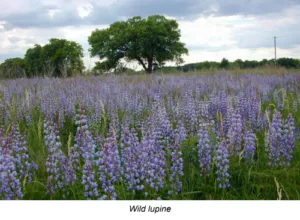 Steigerwaldt aims to provide high-quality, ethical land management practices. While preparing a timber harvest, areas potentially containing rare or endangered species are clearly marked and flagged off to prevent damage to these habitats. In the case of the Karner Blue Butterfly, if wild lupine is identified, KBB surveys are performed and these areas are removed from the harvest area to aid in the conservation efforts.
Steigerwaldt aims to provide high-quality, ethical land management practices. While preparing a timber harvest, areas potentially containing rare or endangered species are clearly marked and flagged off to prevent damage to these habitats. In the case of the Karner Blue Butterfly, if wild lupine is identified, KBB surveys are performed and these areas are removed from the harvest area to aid in the conservation efforts.
– Austin Schoen, Environmental Specialist
